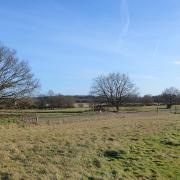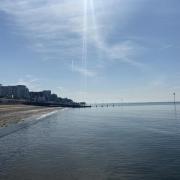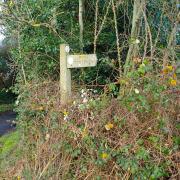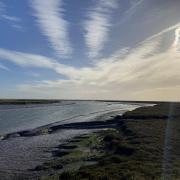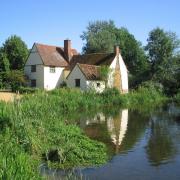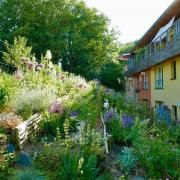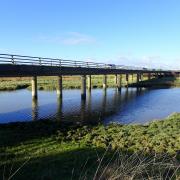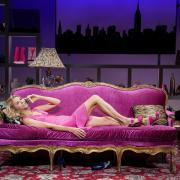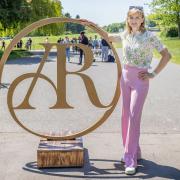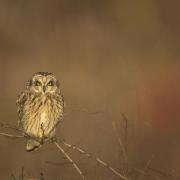Lucy Harwood, the colourful twentieth century East Anglian painter currently has her own solo show at Firstsite art gallery in Colchester, the first one since 1975 that was held posthumously at The Minories three years after she died.
Lucy Harwood was born on New Year's Day 1893. She was a pupil of Cedric Morris who, with his partner and fellow painter, Arthur Lett-Haines has become a household name amongst Modern British artists. Eva Lucy Harwood was born near Ipswich and lived at Belstead Park to a farming and landowning family. They moved to the elegant Georgian house Ackworth Park in East Bergholt with her family until her father passed away. As a child Lucy had hoped to be a musician - and showed great promise as a pianist but a botched appendix operation left her without the use of her right hand side. If ever there was an incident of beauty emerging from ashes it must be Harwood’s emergence of artistic talent. She taught herself to paint using her left hand and it must be said that her artistic talent before and after the operation was significant. Some would say it improved greatly.

Before the First World War Lucy was a student at the prestigious Slade School of Fine Art school in London, the only art school that permitted women. Though rumours abound that she was expelled from the Slade, this would not have happened to paying students, of which she was one. Harwood was an eccentric however and at the East Anglian School of Painting and Drawing in Dedham on the Essex Suffolk border she found herself in good company with Morris and Lett-Haines where artists were encouraged to ‘develop their own style without formal instruction.’
Indeed Harwood moved to Octagon House in Dedham to be closer to this art school. Dedham was not short of artists; Sir Alfred Munnings was also a resident of the pretty town on the river Stour so often painted by John Constable. Curator and writer Hugh St Clair writes about the moment when a fire broke out at East Anglian school in Dedham, supposedly started by Lucian Freud who was also a pupil (I told you there were lots of artists in Dedham!) when he dropped a smouldering cigarette butt. Sir Alfred Munnings is supposed to have driven past the fire, where Cedric Morris had instructed all of his pupils to paint the dramatic scene and laughed at the proceedings. Munnings and Morris, two very great painters with very different styles, did not get on.

After the school burnt down Cedric Morris and Arthur Lett-Haines relocated to The Pound at Higham before settling finally at Grade II listed 16th century house called Benton End in Hadleigh in 1937. Lucy Harwood followed them to Benton End and eventually ended up living at Kiln House in nearby Upper Layham. As Hugh St Clair points out, “Lucy Harwood and Cedric Morris shared a love of plants and nature and he much admired her selection of plants in her garden at Kiln House.” She maintained a close affinity with The East Anglian School of Painting and encouraged the younger pupil Maggi Hambling. Every Sunday as a tradition she would make a formal tea at Benton End despite the fact that she was not in many ways a particularly formal person.
Fellow artist Matthew Smith described Harwood’s work as featuring ‘great delicacy and detail, bold palette and flamboyant impasto’. As the co-curator of the Firstsite show Lucy Harwood: Bold Impressions and author of A Lesson in Art & Life, The Colourful World of Cedric Morris & Arthur Lett-Haines Hugh St Clair explains, ‘Harwood described herself as a dedicated Post-Impressionist with a clear affinity for artists such as Van Gogh and Gauguin.’ Lucy Harwood was a master of landscape and still-life paintings and could often be found sitting with chickens in a hen house so that she could really get the right feel of the animal she was painting. Her favourite subjects for her still-life paintings were objects she would gather up to paint such as a china dog.

Says Hugh St Clair, 'She loved to walk round her garden by day and sometimes at night marvelling at the natural world believing it to be almost divine.' Harwood wrote, 'I seem to walk where the holy laurels talk and sing with much music of moonshine bringing peace and love.' But as Hugh points out, 'she very rarely painted the scenery. Instead she preferred to gather flowers and leaves and bring them inside to set up small jewel-like Still Lives, often adding quirky paintings placing dead fish, ceramic birds and small creatures to create a colourful and bold arrangement in the Post Impressionist style. She was often keen to add depth and interest to the Still Lives by depicting an imagined landscape in the background rendering the works slightly surreal.' It must be said that Lucy Harwood was a prolific painter and often liked to paint one canvas a day. She liked to barter too and regularly gifted her paintings to the local garage at Hadleigh for repairs to her car or swap some gardening at her house for one of her paintings. Many of the paintings that have been lent to the exhibition have been done so by friends and neighbours.
Lucy was also a founding member of the Colchester Arts Society along with Henry Collins, Edward Bawden, Roland Suddaby and John Nash. As Hugh St Clair points out, 'Lucy was a woman in company of mostly men.'

But then Lucy Harwood was an unusual woman. As Hugh says, 'Lett Haines praised her femininity of vision and for being a complete individual incapable of being influenced. She dressed colourfully and unconventionally for the time, but she felt it was required of her as an artist.' Perhaps her bold use of colour is what made Harwood so modern and ahead of her time? She was also a realist. On one occasion Lett Haines overheard two ladies conspiring to destroy what they perceived as unflattering images.” Let’s hope that they resisted that urge! Says Hugh, 'Lucy Harwood painted neighbours, friends and family children, often brought by the sitter or gifted to those less well off. Poignant and piercing in their intimacy and honesty they were often an unwelcome surprise for their subjects.'
Says Sally Shaw Director of Firstsite, Colchester, “Our vision is to make art matter. When we get creative we are exercising brain muscles that help us imagine our future differently. Here at Firstsite we want to celebrate artists who have often overcome major life challenges using their imagination. Lucy Harwood exemplifies this idea. She was overlooked and underappreciated. She was disabled and female at a time when one or other characteristic would have been a major stumbling block to an artistic career - or any other. Yet Lucy was both and as a consequence she was ultra determined. Art was her ticket to freedom and independence of a sort. Her paintings are joyous, expressive and technically gifted as well as an amazing documentation of our area. Firstsite was built to celebrate the culture of this region. If she was alive today Lucy would have been involved in everything that is going on in Colchester including painting, teaching, travelling, mentoring, socialising and networking.'
Firstsite show Lucy Harwood: Bold Impressions is on until 14 April, 2024.





